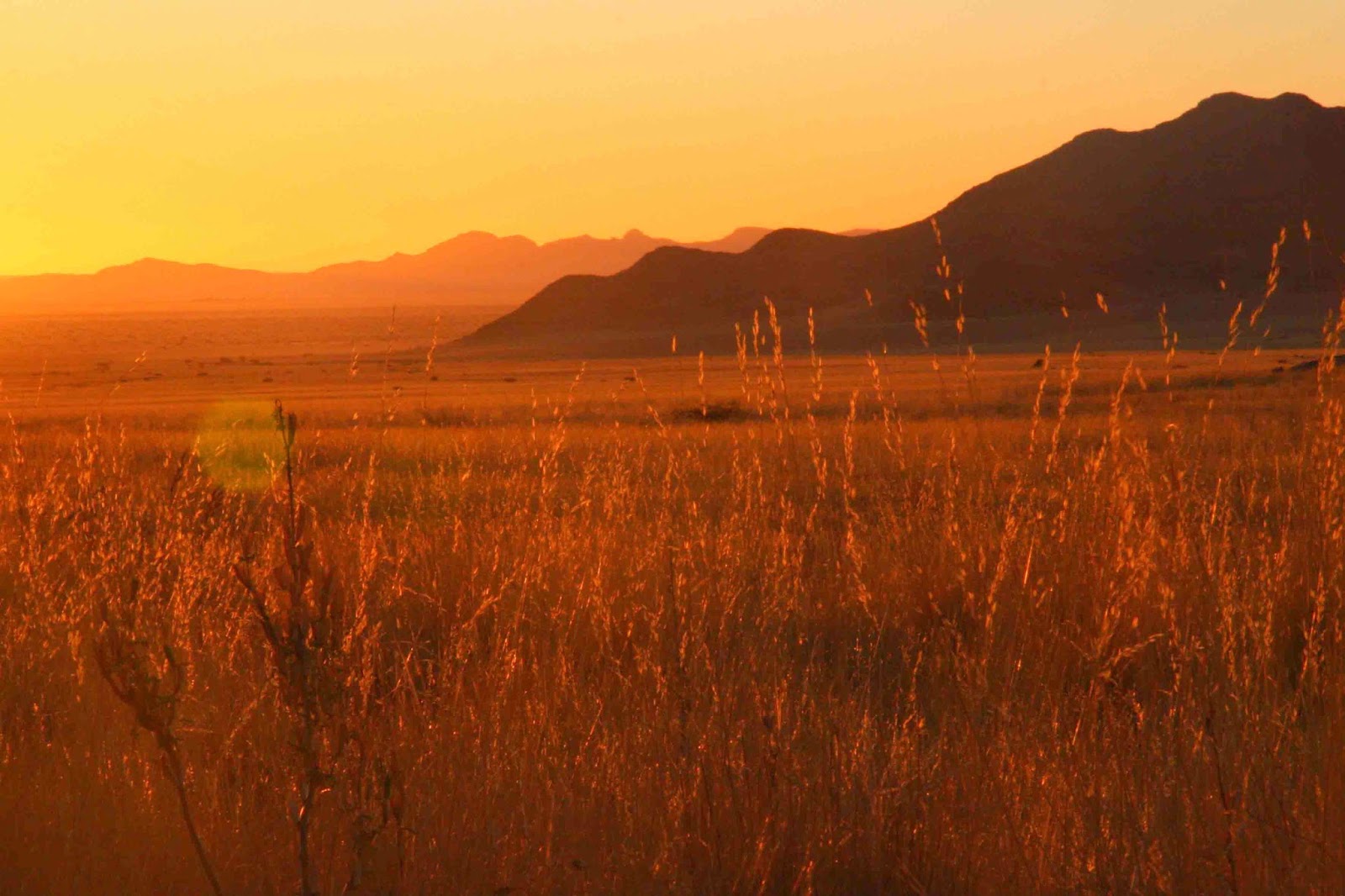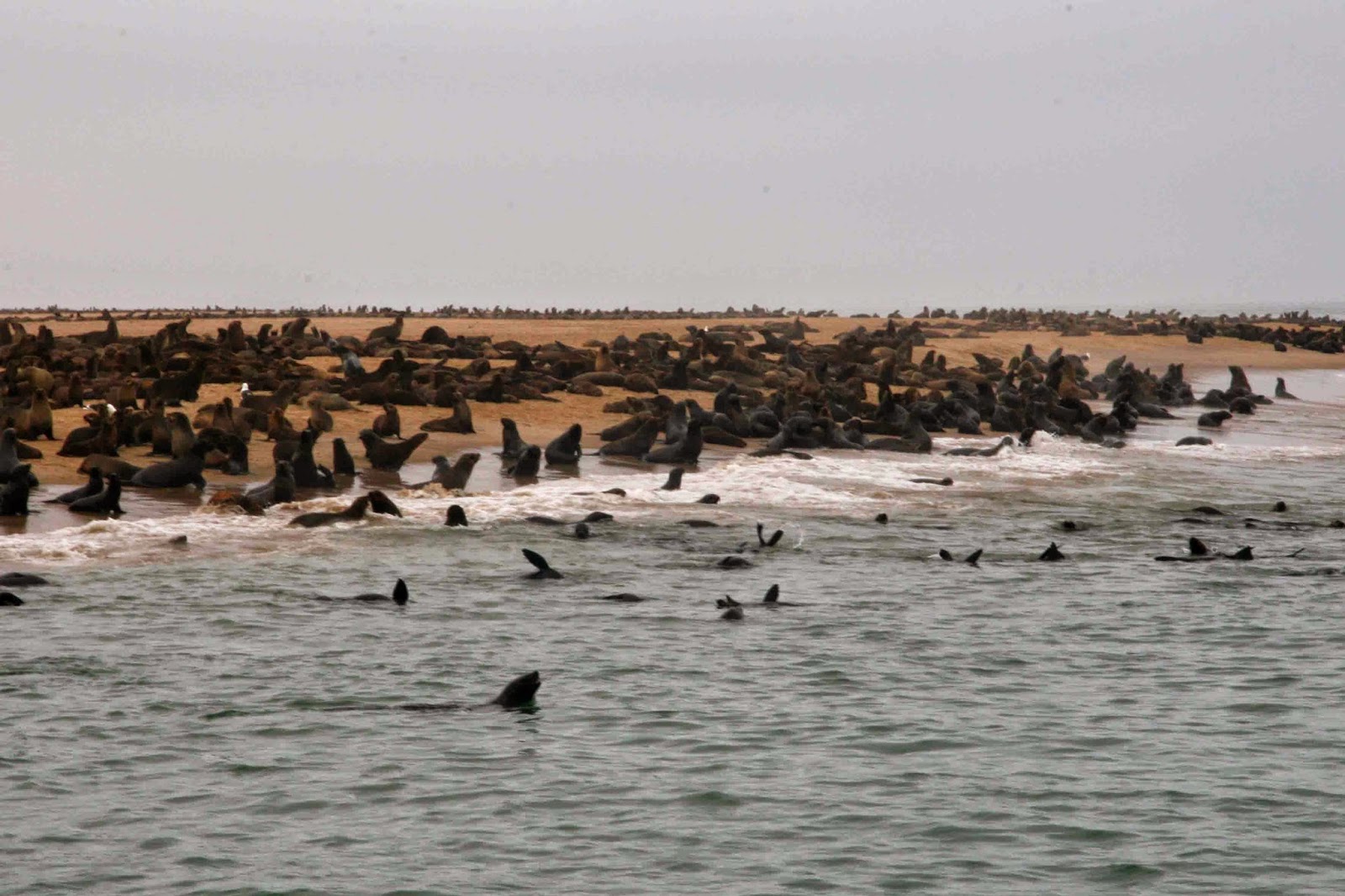From Windhoek to Walvis Bay
Jacqui Cochrane discovers that Namibia is so much more than just desert and dunes.
I have a fear of getting lost in the desert. This is because when I was six years old, I watched a South African movie called **Dirkie**. (That was its Afrikaans title. The English title was **Lost in the Desert**.) Directed by Jamie Uys, it’s the tale of eight-year-old Dirkie who, along with his dog Lollie, must survive in the Kalahari when his uncle’s light aircraft crashes in the desert.
Bravely carrying his little suitcase, Dirkie plods through thick desert sand and encounters snakes, hyenas and scorpions. In fact, one stings him and our diminutive hero is rendered delirious. Thankfully, a kind Bushman and his son find him and offer him shelter and water out of an ostrich egg.
When he wakes up, the generous desert dwellers give Dirkie some meat, but his gratitude turns into horror when he realises that Lollie is missing. The Bushmen believe him to be possessed by bad spirits and, even after the boy finds his dog, they won’t allow him to leave.
Dirkie and Lollie are eventually rescued: His father finds the child unconscious but alive, half buried in the desert sand like a discarded boy mannequin.
What was supposed to be a happy ending did little to quell my new fear of the desert, hyenas and potentially dog-eating strangers, and I took an unusual interest in outdoor survival skills.
Recently, I was invited on a media trip to Namibia – the very country where **Dirkie** was filmed (only then it was known as South West Africa). It would be my second visit to the land of sand. Despite my childhood misgivings, I had rather liked the place and the people on my first visit.
Namibia is the most sparsely populated nation in Africa, and one of the most desolate countries in the world. It is easy to see why the country is typically described with words like “rugged”, “stark” and “barren”, but also “enchanting”, “authentic” and “breathtaking”.
As if it had donned a gigantic, 825,000 km2 sized invisibility cloak, Namibia seems oddly outside of time. With a population of only 2,3 million, many of the people I encountered appeared a little out of synch with things that were happening elsewhere in the world, but also entirely unflappable. Harsh terrain, vast distances and extreme temperatures aren’t exactly conducive to human comfort, but the result, even for tourists, is that you become less concerned with the latest iPhone operating system and more interested in acquiring a decent hat and SPF70 sunscreen.
It’s not difficult to romanticise the lifestyle of Namibians who survive off the land, whether they be farmers of European descent or Himba herders. They seem to have an intimate and ancient knowledge of life and death, of nature at her cruellest and also at her most beautiful.
Our tour kicks off in Windhoek, the country’s capital. The history of the city, and indeed the country, can be read in its layout and architecture. Sights like **Alte Feste** (the old fortress, now a museum) and the Lutheran Christus Kirche (Christchurch) are reminders of the German rule, which lasted from the late 1800s until the end of World War I. When the war ended, the League of Nations mandated the country to South Africa, and the apartheid government also left its impression on the country and its people. One example of this is Katutura, the city’s largest township.
The name, according to one source, is said to mean “we do not have permanent habitation”. According to another, it translates as “the place where people do not want to live”. Either way, it is an unambiguous reference to the forced removals that had taken place under South African rule.
Before heading out of town, we visit the meat market at the Single Quarters. A carnivore’s dream, this is where locals and tourists come to savour **kapana**, or braaied meat.
 Next, our white Toyota Quantum takes us to the Kalahari Desert, where one of our activities is a Bushman walk. Lithe and sure-footed, our San guides point out plants with medicinal properties and show us how water is stored in an ostrich egg. That night, the stars are impossibly close and bright and I feel small and safe in the desert.
Next, our white Toyota Quantum takes us to the Kalahari Desert, where one of our activities is a Bushman walk. Lithe and sure-footed, our San guides point out plants with medicinal properties and show us how water is stored in an ostrich egg. That night, the stars are impossibly close and bright and I feel small and safe in the desert.From there we head south. We pass Quiver trees that stand starkly against the cobalt sky, their geometric shapes like a hipster’s doodles. Rehoboth, Mariental, Seeheim… the names of places read like poetry. We crisscross the endlessly rocky !Karas Region, glimpse the majestic Fish River Canyon and the pools at the Ai Ais hot springs, travel to Lüderitz, then east and north to the bright red dunes of Sossusvlei and Solitaire – which one cannot pass without trying the apple crumble – and then finally back to the coast. The vehicle drones softly over the road beneath our vehicle and disappears into a shimmery grey-blue mirage on the horizon.
Walvis Bay remained under South African control until 1994, four years after the rest of the country had gained independence. “It must have been for the seafood,” I think to myself as I dip an exquisitely soft calamari ring into a tangy sauce at one of the restaurants on the town’s jetty. The real reason, however, probably has more to do with its natural deepwater harbour, the only one of its kind on miles of coastline between South Africa and Angola.
This stretch of coast is also incredibly rich in marine life, which can be appreciated in a restaurant (the oysters are incredible), or on one of the harbour cruises (seals, dolphins, pelicans, flamingos and – true to its name – whales, can be sighted).
In the silvery dunes that hug the area from Walvis Bay to Swakopmund and beyond, Izak the camel helps me to conquer my childhood fears of the desert. His easy lope across the dunes is interrupted every so often when he spots green succulents – delicious snacks for hard-working camels.
As our plane takes off from Walvis Bay, I glance down at the endless sand beneath us, which stretches out like a giant cloth the colour of raw silk as far as the eye can see. I begin to think of a movie I once saw called **Alive**, based on the survivors of Uruguay flight 571… But then I stop the thought, sit back, and soon doze off.



0 comments :
Post a Comment